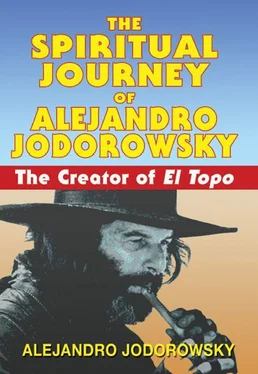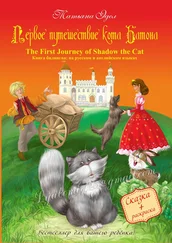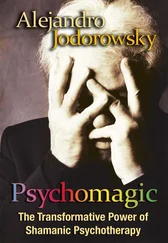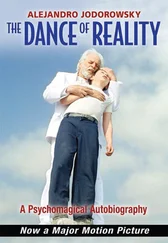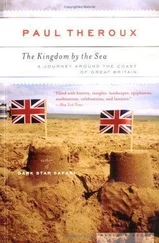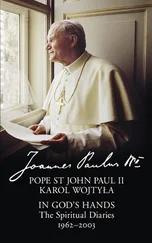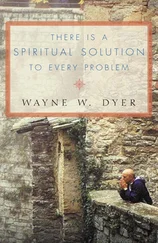“Please don’t think he is some sort of ogre,” Leonora said to me. “Go talk with Chiki (as she called her husband) — you’ll see that he knows many interesting things. He reads five books a day. Right now he is studying Tibetan religion.”
It so happened that I had learned a very complicated Tibetan mudra (sacred hand gesture), which I had copied from a manuscript I had seen. With each thumb, I pulled the ring finger of the opposite hand toward my chest, and pressing the ring fingers against each palm, I brought together the two ring fingers like a symbolic mountain. I then used each of my index fingers to grasp the ring finger of the opposite hand and bring it down parallel to the little finger.
Approaching Chiki, I performed this complex operation and proudly displayed the mudra to him, asking him at the same time (with the hope of impressing him and starting an interesting conversation): “What is this?”
He shrugged. “Ten fingers.”
With this one stroke, like a violent wind sweeping away all garbage, he banished all metaphor from my mind. No matter how much I entangled my fingers, I would never arrive at truth, only at a symbol that was as useless as the mutterings of an idiot. Ten fingers are still ten fingers. Awkwardly, I excused myself and hurried away to drown my humiliation in a glass of tequila. There and then, I decided to continue my meditations with Ejo.

“How can you walk in a straight line through the forty-nine hairpin turns of a mountain path?”
I reflected for a minute, which seemed like an eternity. An answer came to my lips: “A labyrinth is only the illusory complication of a straight line,” I said.
Ejo clapped his hands loudly, though I didn’t know whether it meant applause or, on the contrary, that I was asleep and must wake up.
“Explain, poet!” he commanded.
“I mean that the very act of asking us how to attain a goal makes us see a straight path as full of curves,” I answered.
Ejo smiled. “Let’s see what our secret book has to say about it.” He read aloud: “The disciple, leaning and turning to the side, twisted around the room as if he was climbing a narrow mountain path.” Then he told me, “Without a word, imitate the disciple. Then tell me what you have understood.”
After I had done so, I said: “Ejo, the monk is showing us how illusion — symbolized by the twisting and turning — complicates our lives. If we free ourselves from illusion, we see that the path that seemed complicated is actually straight and simple.”
“Well, your poetic answers certainly have power, but the only thing they can accomplish is to do away with the question without reaching its essence. When you use words to conquer words, you find yourself ultimately on a battlefield full of corpses. By giving an intellectual explanation to a mute gesture offered by Hakuin’s teaching, you become lost in the labyrinth. The disciple is not trying to demonstrate anything. Silently, he stands up, leans over, moves in curving paths, climbs an imaginary mountain. But he does not change; he remains empty. He is who he is, without wondering who he is. He abides in the unity at the center of the ten thousand things. If you understand that, you will have no difficulty answering the next koan: How do you take a stone from the bottom of the ocean without wetting your sleeves?”
Using the skills I had learned as a mime, I plunged into an imaginary ocean, swam to the bottom, lifted a large stone in my arms, came to the surface, and emerged from the water. Confident of the rightness of this gesture, I placed the stone before Ejo and awaited his enthusiastic response. But instead, he asked me abruptly: “What is this stone called?”
I was silent for a moment. “It. . is called ‘stone,’” I stammered. “It is called ‘awakening’. . it is called ‘Buddha’. . it is called ‘truth.’” I could have gone on like this, but Ejo silenced me with a blow of his flat kyosaku.
“Intellectual, learn to die!”
I was offended. This was the first time he had said this to me. Then he struck me again.
“Awakening is not a thing. It is not a goal, not a concept. It is not something to be attained. It is a metamorphosis. If the caterpillar thinks about the butterfly it is to become, saying ‘And then I shall have wings and antennae,’ there will never be a butterfly. The caterpillar must accept its own disappearance in its transformation. When the marvelous butterfly takes wing, nothing of the caterpillar remains. . Now come on, let’s play a game!” he said. “You be me, and I’ll be you. Ask me a question.”
Imitating his Japanese accent, I said: “What is the name of this stone?”
Imitating my Chilean accent, he said: “Alejandro.”
Now I understood: This stone was me, identified by my name, my imagined limits, my language, my memory. To remove the stone from the bottom of the ocean — the world as it is, an inexplicable dream — meant removing my identity in order to realize that it is illusory, seeing that there is no difference between master and disciple, for one is the other and all apparent multiplicity is eternal unity.
I took his stick and gave him a blow on each shoulder. He bowed to me as if he were my disciple. Then he went to the kitchen and returned with a large bottle of sake.
“Now, master, we are going to celebrate this!” he exclaimed, pouring me a glass of the delicious beverage. We finished our glasses and continued drinking. Ejo was frolicsome but very conscious. I also felt that my mind had been set free. Only my body, with all its muscles relaxed, seemed still to be living its own life, far from me.
“Alejandro, poetry — at least the way you use it — is a game that I do not know. It amuses me to see how you use it to nullify koans. It is also a sacrilege, but that is good: Without sacrilege, a disciple cannot realize himself. ‘If you meet the Buddha on the road, cut off his head.’ Now let us see how you will nullify the two major koans of the Rinzai school!”
“Oh, Ejo,” I protested, “I have had too much to drink to be able to do that.”
Ignoring this, he clapped his hands. “That is the sound of two hands clapping.” He then raised his right hand. “What is the sound of one hand clapping?”
I lifted my hand and placed it directly opposite his hand. “The sound of my one hand is the same as the sound of your one hand.”
The monk laughed uproariously and continued: “Does a dog have Buddha nature?”
“The Buddha has dog nature.”
Staggering as a man staggers on a boat in choppy water, he went to the kitchen and returned with another bottle. Filling our glasses, he said: “Let’s continue. This is an excellent game.”
We drank until the dark sky began to fill with light. He challenged me with a great many koans. I do not remember all my responses, but what I cannot forget is the immense joy I felt in being one with the master. By the end of our session, I no longer knew who was asking the questions and who was answering them. In the zendo, there were no longer two people, only one — or none.
“It never begins and it never ends. What is it?”
“I am what I am!”
“How does the intellectual learn to die?”
“He changes all his words into a black dog that follows him around!”
“Do the shadows of the pines depend on the moonlight?”
“Pine roots have no shadow!”
“Is the Buddha old?”
“As old as I am!”
“What do you do when it cannot be done?”
“I let it be done!”
“Where will you go after death?”
“The stones of the road neither come nor go!”
“If a woman advances on the path, is she your older or younger sister?”
Читать дальше
